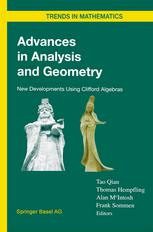

Most ebook files are in PDF format, so you can easily read them using various software such as Foxit Reader or directly on the Google Chrome browser.
Some ebook files are released by publishers in other formats such as .awz, .mobi, .epub, .fb2, etc. You may need to install specific software to read these formats on mobile/PC, such as Calibre.
Please read the tutorial at this link: https://ebookbell.com/faq
We offer FREE conversion to the popular formats you request; however, this may take some time. Therefore, right after payment, please email us, and we will try to provide the service as quickly as possible.
For some exceptional file formats or broken links (if any), please refrain from opening any disputes. Instead, email us first, and we will try to assist within a maximum of 6 hours.
EbookBell Team

5.0
108 reviewsOn the 16th of October 1843, Sir William R. Hamilton made the discovery of the quaternion algebra H = qo + qli + q2j + q3k whereby the product is determined by the defining relations ·2 ·2 1 Z =] = - , ij = -ji = k. In fact he was inspired by the beautiful geometric model of the complex numbers in which rotations are represented by simple multiplications z ----t az. His goal was to obtain an algebra structure for three dimensional visual space with in particular the possibility of representing all spatial rotations by algebra multiplications and since 1835 he started looking for generalized complex numbers (hypercomplex numbers) of the form a + bi + cj. It hence took him a long time to accept that a fourth dimension was necessary and that commutativity couldn't be kept and he wondered about a possible real life meaning of this fourth dimension which he identified with the scalar part qo as opposed to the vector part ql i + q2j + q3k which represents a point in space.